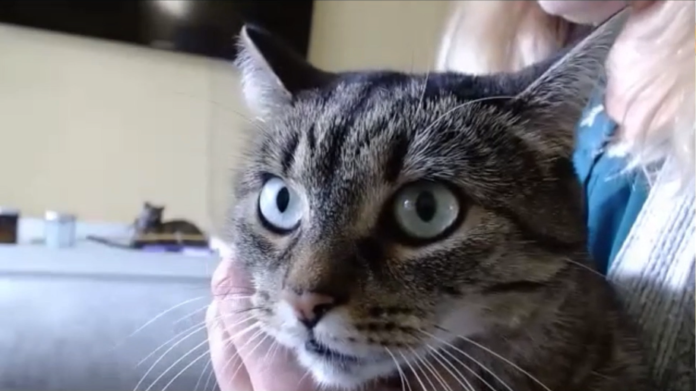UC Davis researchers find cats are less stressed during video appointments than in-person visits
By LILLY ACKERMAN — science@theaggie.org
Animal welfare epidemiology researchers in UC Davis’s Department of Animal Science are studying telemedicine for cats as a way to increase ease of access to veterinary appointments.
Virtual doctor’s appointments have grown increasingly popular in recent years as a convenient option for healthcare, and cats might benefit from this option for their veterinary visits as well.
Grace Boone, an assistant specialist at the Animal Welfare Epidemiology Lab at UC Davis, explained that some barriers to cat care can be overcome via telemedicine.
“[Cats] don’t tend to see the veterinarian as often as dogs do, and part of that can be due to their perceived or actual stress levels when seeing a veterinarian as compared to dogs,” Boone said. “Some of it might also be a perception that cats are an easier pet and don’t need as much care, but they do need regular veterinary visits just like dogs do to keep them healthy.”
According to Boone, telemedicine can be an especially helpful option for cats whose owners have a disability, live far away from a veterinarian or are otherwise unable to make it to frequent in-person appointments. Cats can also be more difficult to transport than other pets, making telemedicine an appealing choice.
In order to determine whether telemedicine might be a less stress-inducing option for cats, researchers examined pupil dilation, respiration rate, ear position and lip-licking behaviors in 30 cats at mock virtual and in-person appointments.
The researchers found that cats’ pupils were less dilated, respiration rates were lower and ears were in more relaxed positions at home as opposed to when they visited the mock in-person clinic. All of these results were significant and indicate a less stressful experience for cats when seen virtually, opening the door for further research into veterinary telemedicine.
“It does look like — based on our results — cats were calmer at home, which is what you would expect, so that’s good,” Boone said. “We have these validated stress measures, and we see that the cats are calmer at home according to those measures, so that’s really helpful to build off of.”
According to Boone, telemedicine can be used for follow-up appointments after a procedure, check-ups for cats with monitored ongoing health issues and even for emergencies; veterinarians can provide instruction when the owner is too far away to make it to a clinic in time.
After virtual appointments, owners expressed increased interest in telemedicine for their cats in the future. They also tended to rate their cat’s experience with in-person appointments lower than with virtual appointments, highlighting the difference in stress levels the cats experienced between the two.
The findings provide a baseline that can be expanded to involve more cats, real clinic appointments and even other animals.
“Based on owners’ responses and also based on the cats’ responses, it looks like [telemedicine] could be a really really good tool for increasing access to care for these animals,” Boone said.
Written by: Lilly Ackerman — science@theaggie.org




